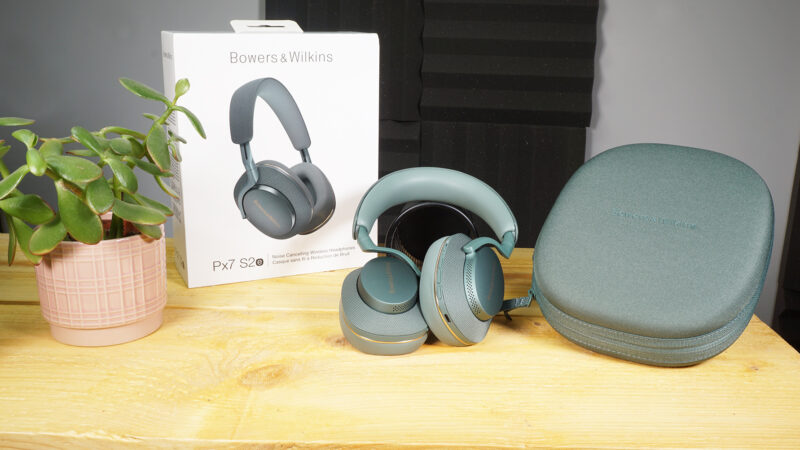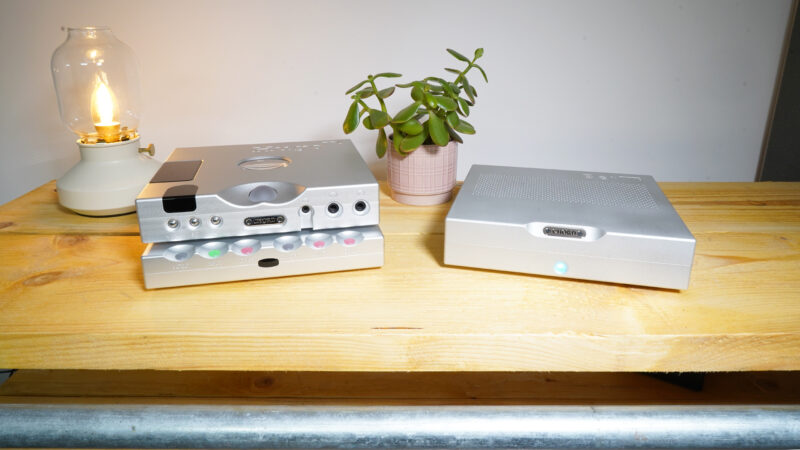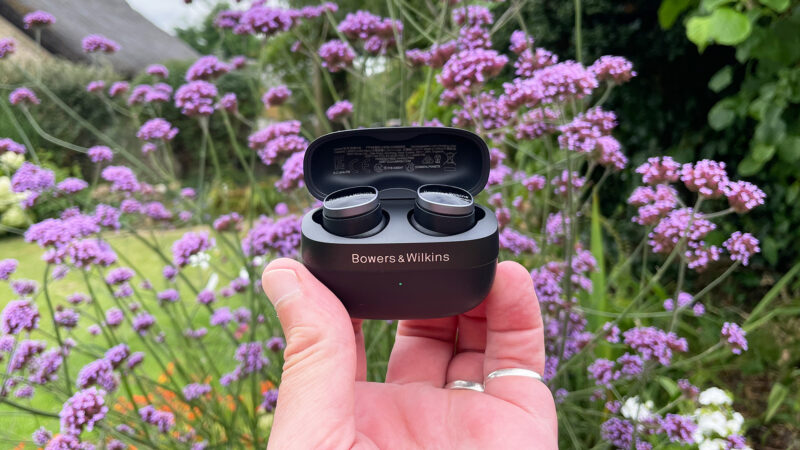The Chord Electronics Mojo 2 portable DAC/headphone amp and its dedicated streamer/player module, the Poly, are aimed at the music lover on the move. The Mojo’s name, after all, is a portmanteau of ‘Mobile Joy’, and the Poly — which is sold separately — only bolsters that further, bragging Bluetooth, WiFi and Roon Endpoint capabilities.
However, this delightful duo are also very much at home when used, well, at home, making them a tempting buy for anyone looking for a flexible streaming solution for home and away.
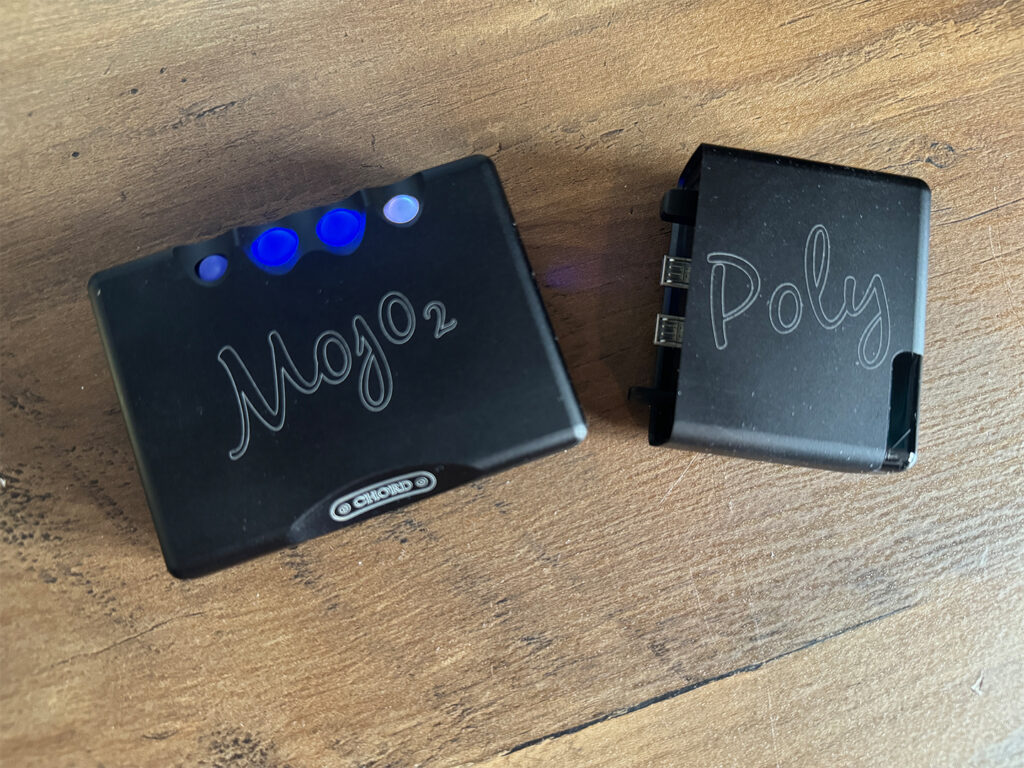
Mojo 2 portable DAC/headphone amp, just add Poly to open up a wealth of streaming options
Strong reputation
It’s fair to say Chord Electronics’ Mojo DAC has made quite a name for itself since it burst onto the hifi scene in 2015. Borrowing a chunk of its aesthetic from its big brother, the Chord Hugo, the Mojo launched to near-universal praise, helped along by the fact it delivered a fair amount of the Hugo’s performance in a portable palm-sized form factor – not to mention a cheaper price tag.
Fast forward nine years and, from the outside at least, much of that remains here in its second generation, which launched in January 2022. That means the sturdy aluminium framework and multicoloured spherical controls for power and volume are still present and correct (though anyone familiar with the first version will spot an extra button here – more on that shortly), but there have been some pretty substantial upgrades under the hood.
In fact, Chord Electronics has promised that the Mojo 2 is not only more powerful and more efficient than its predecessor, but that it sounds better too, all helped along by the brand’s new proprietary 104-bit digital processing technology.

Mojo 2’s digital inputs include 3.5mm coaxial, optical, microUSB, and USB-C
This also powers the Mojo 2’s new features, including what Chord Electronics is claiming to be the “world’s first lossless DSP”. That new menu button I mentioned above sits at the heart of this and allows the user to make tonal adjustments to the lower bass, mid-bass, lower treble and upper treble, with no loss of quality. Mojo 2’s colourful buttons will help you navigate this – simply click through to the corresponding colour for the frequency you wish to tweak (full details are in the user guide), and press the + or – buttons to customise the sound.
There are also four different crossfeed settings (three intensity levels and an option to switch them off entirely), which work similarly. Tweaking this adjusts the spatial effects in playback for a more “speaker-like” experience through headphones.
Speaking of headphones, you get two 3.5mm headphone outputs, and Chord has also added a USB-C data input for playback in this second generation. That said, it still charges by micro USB (to retain backwards-compatibility with the Poly streamer/player), which results in a pretty slow five-hour charge time, and the battery capacity is at least up 9% on its predecessor, so you are getting over eight hours of playback – just be aware it does run pretty warm after a couple of hours on the go.

MicroSD card slot allows hi-res music playback from locally stored media
Yet where the Mojo 2 has seen so many upgrades, Poly hasn’t physically changed since it was released in 2017. But then, for the most part, it hasn’t really had to – and over its life it has had over a dozen significant firmware upgrades. The Mojo is the real brains of the operation here, with the Poly bringing wireless connectivity to it when connected through the Mojo 2’s dual micro USB ports. It’s a pretty snug fit when sat on your desk, and you can get a leather carry case to keep the two devices securely connected when shoved in your bag.
When connected, the Poly allows music to be streamed to it from phones, laptops and NAS drives, using AirPlay, DLNA and Bluetooth 4.1, plus it can create its own hotspot to allow you to use AirPlay in a direct connection between Poly and your device when out and about (you’ll just need to ensure the content you want to listen to is available offline). Poly also allows solid state playback library playback from microSD cards rated up to 1TB.
Chord Electronic’s Gofigure app helps you get everything set up here, which offers a huge upgrade to the user experience from the first time we saw Poly. Its original control method was via a small pinhole interface, which required manual poking with a SIM tray-like tool you get with your phone. That’s still available to you if you need it of course – it works, but it’s not the most intuitive.
The app, on the other hand, makes things much more straightforward. It’s a bit on the leisurely side and needs to reconnect to Poly every time you launch it, but once you’re in it will allow you to set up Poly for wifi, Bluetooth and as a wifi hotspot, plus it lets you switch into Roon mode.
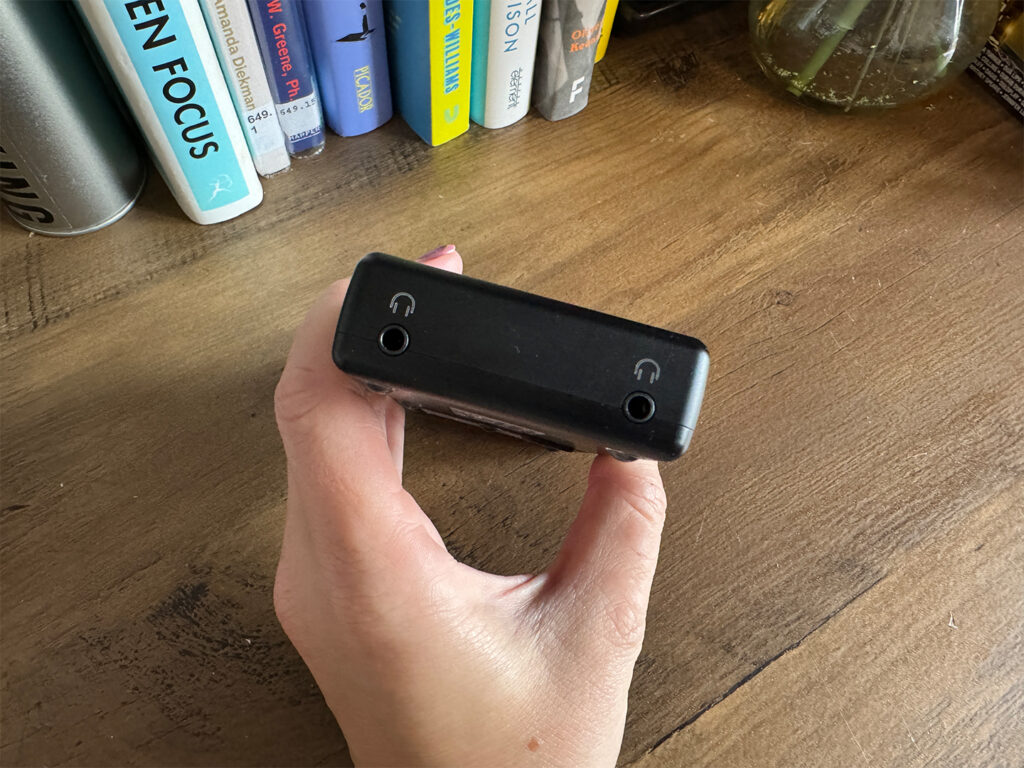
Even better to share – twin 3.5mm headphone outputs for driving a range of cans
As for file support, whether you’re using the Mojo 2 on its own, or with the Poly, your options are simply outstanding. PCM files are supported up to a whopping 768kHz, and all the way up to DSD256 too. The only disappointing thing is the Bluetooth on board is bog standard – there’s no aptX or LDAC, just regular SBC. For that reason, Chord Electronics pretty much advises against using Bluetooth for playback, and instead use it purely for connecting to the app, which is fair enough.
The app is more than adequate, but it would be nice to be able to browse and stream directly from connected devices rather than having to use a third-party UPnP app (including to browse the contents of any microSD card you insert).
Performance
The real beauty of investing in the Poly/Mojo pairing is that you have options. For me, the charm is in its portability, and piling hi-res tracks onto a microSD cards or streaming direct from Qobuz and Tidal through a (much) higher quality DAC than my phone or laptop is where I have found myself using it most over the last few months of testing.
You can of course pick up a decent hi-res music player like the Astell & Kern’s A&norma SR35 (£799) for around the same price as the Poly/Mojo 2 combo if what you’re looking for primarily is a DAP, but the Mojo/Poly combo is so much more.
I know that when I get where I’m going, I have a DAC I can hardwire to my computer that punches way outside of the performance stakes for its size. When I get home, I can slot it into my system for an entry-level streamer, and Roon users have an affordable and flexible endpoint too. Once again, a WiiM Pro Plus may make more sense if adding affordable streaming to your system is your main aim, but as a hybrid product, the Chord Electronic’s Mojo/Poly is pretty much unmatched at its price.
So how does it sound? Using the Mojo 2 on its own, connected to my MacBook via USB-C and using Beyerdynamic’s DT 770 Pro X, Tidal streams sound considerably more impressive. The soundstage is much larger, giving big instrumental pieces all the more space to breathe and develop, there’s more clarity so finer detail is surfaced better and it’s an overall richer, more refined and engaging sound.
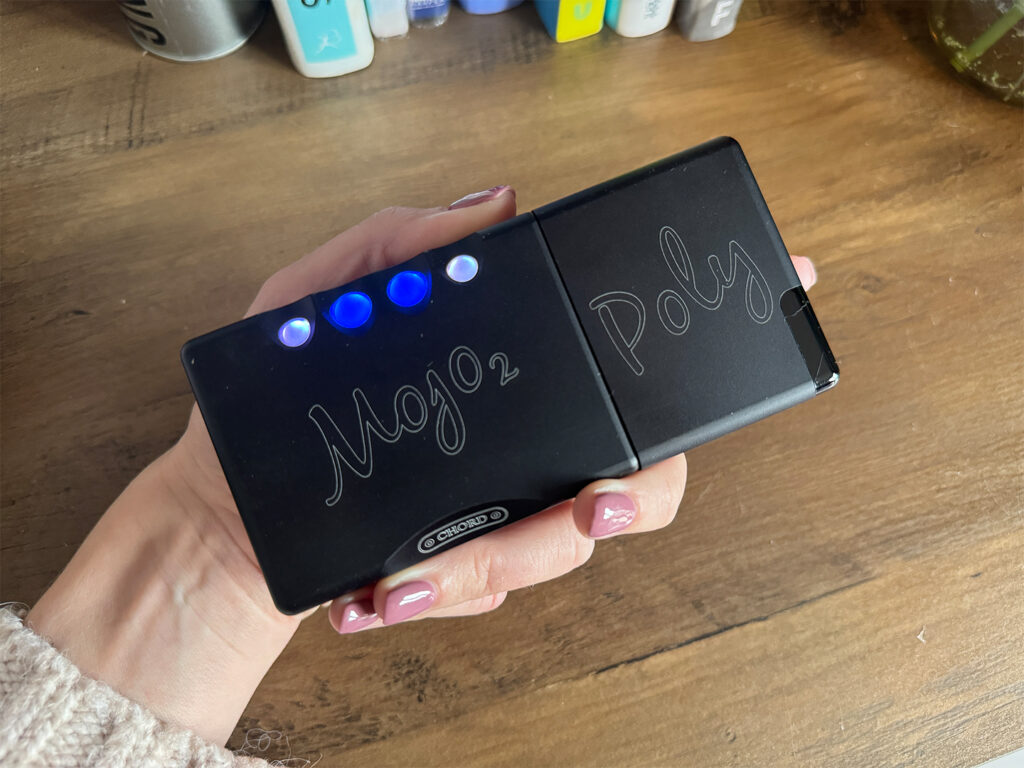
Two become one, Mojo 2 and Poly seamlessly joined together
Hans Zimmer’s Why so Serious? from The Dark Knight is not exactly the most relaxing piece of music to listen to, and the Mojo 2 draws that discomfort out even further – in the very best way for a track of this type, of course. With the track’s peaks and troughs, its quiet moments swiftly punctuated by the manic ones, the Mojo 2 gives a more explicit run-through of every up and down, twist and turn. The dynamic build around the three-minute mark is more subtle, more steady – creating the perfect crescendo before the sub-bass drop that follows.
Turning to something a little more upbeat, and now we engage Poly to let it do its thing. Listening to Backbone by Chase & Status on Tidal (24-bit/48kHz) via AirPlay, and the Poly rises to the challenge, with a full-bodied, forward presentation that captures every bit of the track’s energy. Detail retrieval is still great when wireless (if you’re looking out for it, you’ll notice a slight drop in subtlety compared to the wired Mojo 2, and a smaller soundstage too, but it blows the wireless performance of a Bluetooth stream out of the water) as you’d expect.
Utilise the Poly’s microSD card slot, and while requiring a third-party app to access and control it all is a little bit fiddly, the sound you’ll get for your troubles (pretty mild, all things considered) more than makes up for it.
Listening to a 24-bit/192kHz recording of ELO’s Mr Blue Sky and the insight and transparency served up by this dinky duo is nothing short of outstanding. Once again, the thing that stands out here is the added clarity and resolution – it’s delivered here in spades, and while you can easily keep a running note of any number of individual rhythmic and instrumental elements, they all fit together to create a solid, unified sound.
In summary
The Chord Electronic’s Mojo 2 and its Poly streaming partner are a formidable partnership for anyone that is looking for a flexible way of getting the most out of their music, whether at home or on the go.
The user experience is a little way off the very best and Gofigure app helps, but it could benefit from a few more features to make it truly competitive, plus better Bluetooth support. Overall though, for a high-quality DAC and streamer that’s portable, flexible and smaller than your phone, the Mojo/Poly combination comes highly recommended.







